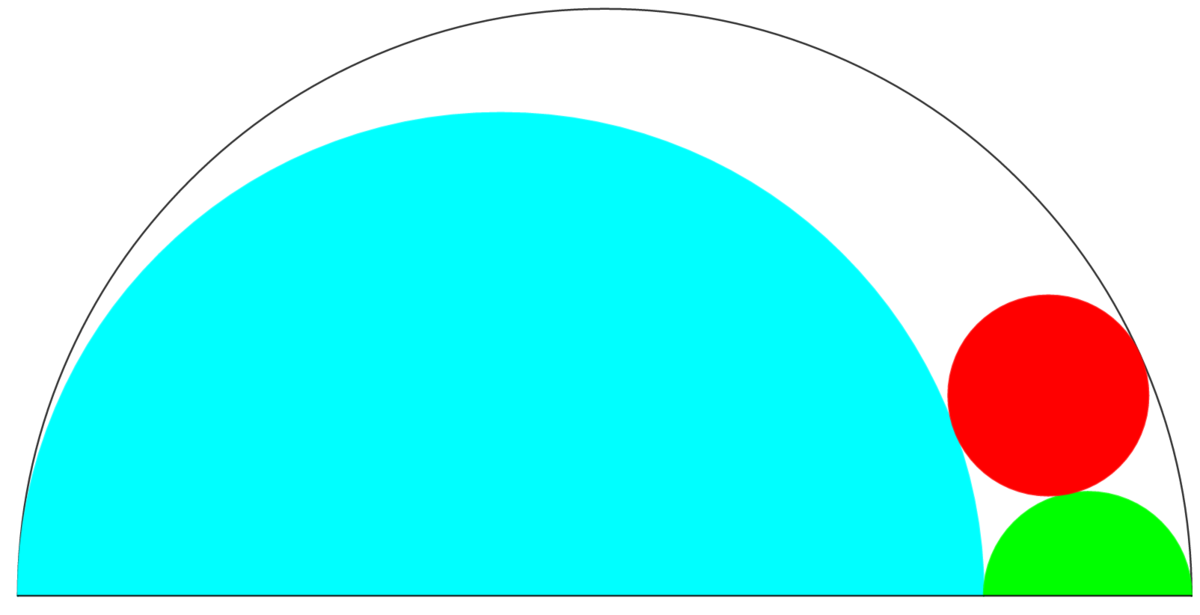Descartes Sangaku : The Beast part 1
- The diagram shows a semi-circle of radius 1. We place a point on its diameter.
- This point allows us to draw two semi-circles (green and cyan).
- We inscribe a red circle so that this circle is tangent to the other three semi-circles.
- The center of the semi-circle of radius 1 is the origin of the coordinate system.
The question: What is the area of the red circle when the sum of the coordinates of its center is maximum? The answer can be expressed as where , , , are positive integers. Evaluate

The answer is 5.
This section requires Javascript.
You are seeing this because something didn't load right. We suggest you, (a) try
refreshing the page, (b) enabling javascript if it is disabled on your browser and,
finally, (c)
loading the
non-javascript version of this page
. We're sorry about the hassle.
We shall use the Pythagorean theorem to express R ( x ) , l ( x ) and h ( x ) in terms of x 
We shall write three equations using the diagram: